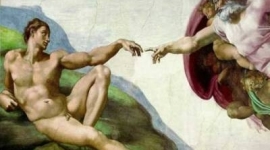VATICAN MUSEUMS – HISTORY
Vatican Museums (Italian: Musei Vaticani), in Viale Vaticano in Rome, inside the Vatican City, are among the greatest museums in the world, since they display works from the immense collection built up by the Roman Catholic Church throughout the centuries, including some of the most renowned classical sculptures and most important masterpieces of Renaissance art in the world. More than five hundred years old, the Vatican Museums trace their origin to a group of sculptures collected by Pope Julius II (1503-1513) – including the famous Laocoon and His Sons – and first displayed to the public in 1506, in the Vatican’s Cortile Ottagono.Pope Julius II was particularly fond of ancient sculpture and contemporary painting. In 1503, the year of his appointment as Pope, he placed some works of art in the gardens of the Belvedere, enabling a small number of scholars and artists to observe and study them. Among the finest art museums in Europe, they contain some of the world’s greatest examples of painting, sculpture, tapestry and other decorative arts. Visited annually by over 4 million visitors, the Vatican Museums include 54 separate galleries.
Sistine Chapel
The Sistine Chapel frescoes with its Genesis and Last Judgment frescoes painted by Michelangelo and the Raphael and the Stanze della Segnatura decorated by Raphael are on the visitor route through the Vatican Museums.
Pinacoteca (Picture Gallery)
The Pinacoteca building, designed by the architect Beltrami, adjoins the Museum complex by the entrance of the Quattro Cancelli. Many of its works of art were stolen by Napoleon in 1797, but eventually returned to Rome after the Congress of Vienna (1815). The works, spanning the period from the medieval Gothic era to the 19th century are arranged in chronological order, in 18 rooms.
The Loggias
Designed by the architect Donato Bramante under Pope Julius II, the project was taken over by Raphael who also painted the frescoes on the second level.
Egyptian Museum
Contains Greek original statues, along with Roman copies and sculptures .
Etruscan Museum
Opened in 1837, the museum features vases, small bronze sculptures and other archeological findings from Etruria, along with a number of Hellenistic vases and some Roman antiquities.
The Immaculate Conception and Sobieski Rooms
The Sobieski Room, named after the monumental painting by the Polish artist Jean Matejko (1838-1893), depicting Polish King Sobieski’s 1683 victory over the Turks.The Room of the Immaculate Conception houses a large bookcase of books gifted to Pius IX (1846-1878) by kings, bishops, following the promulgation of the Immaculate Conception.
Chiaramonti Museum – Braccio Nuovo Gallery
Established by Pius VII Chiaramonti (1800-1823) to house a collection of Roman statues and portrait busts, the display includes almost a thousand sculptures, including portraits of Emperors and gods, reliefs of sarcophagi.
Gallery of Tapestries
Contains tapestry masterpieces created during the papacy of Clement VII (1523-1534) by Flemish weavers in Brussels, according to drawings provided by Raphael’s pupils.
Gallery of Maps
Named after the 40 maps of Italy and the papal lands, frescoed on the walls between 1580 and 1585.
Pius-ClementineMuseum
Houses the Vatican’s most important Greek and Roman antiquities, including works and copies of works by Lysippos (c.395-305), Praxiteles (Active 375-335), Apollonius, and others.
Apartment of Pius V
Comprising a gallery, two small rooms and a chapel, the apartment was originally built for Pope Pius V (1566-1572) and decorated by Giorgio Vasari and Federico Zuccari.
Borgia Apartment
Was built for Alexander VI (1492-1503), most of its rooms are now home to the Vatican’s Collection of Modern and Contemporary Religious Art, consisting of some 600 works of painting, sculpture and graphic art. Highlights include works by Paul Gaugin, Marc Chagall, Paul Klee and Wassily Kandinsky.
RaphaelRooms- Papal Apartments
For a short guide to the Stanze di Raffaello, which includes: the Room of the Signature (Stanza della Segnatura), the Room of Heliodorus (Stanza di Eliodoro), the Room of the Borgo Fire (Stanza dell’incendio del Borgo), and the Room of Constantine (Sala di Costantino).


Pingback: I Love Italian Renaissance Art | Vino Con Vista Italy Travel Guides and Events
Pingback: I Love Italian Renaissance Art | Vino Con Vista Italy Travel Guides … | Renaissance Art
Pingback: I Love Italian Renaissance Art | Vino Con Vista Italy Travel Guides and Events
Pingback: Vino con Vista Loves Italian Renaissance Art | Vino Con Vista Italy Travel Guides and Events
Pingback: Vino con Vista Loves Italian Renaissance Art | Vino Con Vista Adventures of the Globe-Trotting Wino